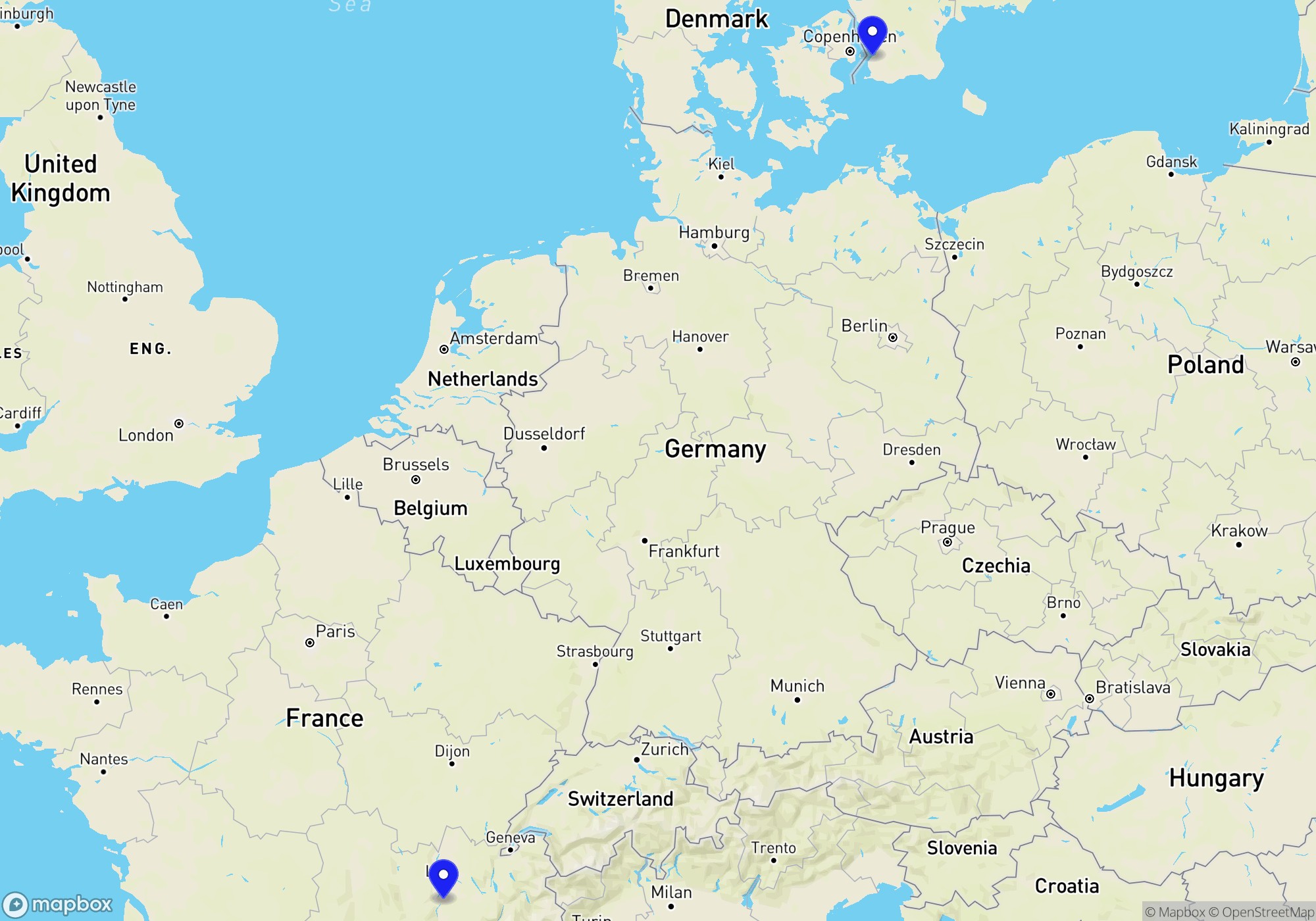
You can buy train tickets directly from the operator or through a reseller. The reseller is typically slightly more expensive (3-5%) but can provide an easier booking experience, especially if you travel with more than one operator.


These operators provide a complete journey either as a direct connection or through their partners. Even if a change of trains is involved, it’s all part of a single itinerary managed by the same train company or its partners, offering a smoother and more coordinated travel experience.

Some operators don’t run direct trains the whole way, but they serve either the departure or arrival station. In many cases, you can combine two of these operators to complete your journey by changing trains along the way. This is often a flexible and budget-friendly way to travel — especially if you’re comfortable piecing together your own itinerary.
Just keep in mind that these are separate journeys, which means a delay on the first leg could cause you to miss the second without automatic compensation or rebooking. It’s a great option for confident travelers who don’t mind a bit of extra planning.


FlixBus is primarily a long-distance bus service known for its extensive network across Europe, but it does not directly operate train services. However, they are part of the Flix family, which also includes FlixTrain in Germany, offering low-cost rail services on select routes. If you are traveling by train from Malmö to Vienna, it would involve services provided predominantly by other international rail companies like Deutsche Bahn or ÖBB, rather than FlixTrain. As for the bus service, FlixBus offers an economical travel option with modern coaches featuring comfortable seating, power outlets, free Wi-Fi on most routes, and snacks or drinks available for purchase. Their customer support can be accessed online or through their app, offering assistance with booking, schedules, and baggage information. First-time travelers should plan for a longer journey with FlixBus compared to trains, considering transfers and potential layovers, given that this is not a direct rail operator for the Malmö to Vienna route.
When traveling by train from Malmö to Vienna, several rail passes can be valid depending on your residency status. If you are a European resident, the Interrail Global Pass can be utilized for this journey as it covers multiple countries, including both Sweden and Austria. However, the Interrail One Country Pass would not be applicable as it is only valid within a single country. If you are not a resident of the European Union, you can use the Eurail Pass, which also covers international train travel between these countries. Ensure that the specific trains you plan to use accept these passes and check for any necessary seat reservations.
Upon arriving in Vienna by train, you’ll likely disembark at either Wien Hauptbahnhof (Main Station) or Wien Westbahnhof, both of which are well connected to the city’s excellent public transportation network. The Vienna U-Bahn (metro) system is fast, efficient, and consists of five lines that can quickly take you across the city. Stations are marked with a “U” sign, and services generally run from around 5 AM till midnight, with extended hours on weekends. Vienna also boasts an extensive tram network that is perfect for shorter journeys and offers a scenic way to explore the city, with stops located throughout the urban area. Trams run frequently, and like the metro, ticketing is integrated across all public transport.
For personalized travel, Vienna has a robust taxi system and you can hail a taxi on the street, find them at designated ranks, or order one by phone. Taxis are metered, but it’s good to have an idea of approximate fares. Alternatively, ridesharing services such as Uber operate in Vienna and can be a convenient alternative to taxis, especially for non-German speakers, as they require no cash and leverage a familiar app interface.
Tickets for public transport are available at ticket machines in stations, tabac shops, online via the Wiener Linien website, or through their mobile app. Tickets must be validated before boarding by stamping them at the blue machines found at stations and on trams. Consider purchasing a Vienna City Card or a weekly pass if you plan on extensively using public transportation, as they offer unlimited travel within the city and additional benefits.
Vienna, as a central European hub, offers a network of efficient and comfortable train connections both domestically and internationally. Domestically, the ÖBB (Austrian Federal Railways) offers frequent and comprehensive connections from Vienna to major cities like Salzburg, Graz, Innsbruck, Linz, and Klagenfurt. Internationally, the Railjet and EuroCity services provide seamless travel options. To the west, there are regular trains to Munich, Germany, with connections continuing to places like Zurich in Switzerland. Heading north, there are direct trains to Prague in the Czech Republic, while to the south, travelers can enjoy scenic routes to Ljubljana, Slovenia. The eastward connections are efficiently served by routes to Budapest, Hungary, often on modern Railjet trains that provide comfort and convenience. Additionally, Vienna is connected to cities like Bratislava in Slovakia by frequent regional trains, making day trips highly feasible. These services collectively underline Vienna’s role as a critical juncture in Europe’s rail network, offering efficient services that bind Austria to its neighbors and beyond.
The best time to visit Vienna is generally during the shoulder seasons of spring, from April to June, and fall, from September to October. During these periods, the weather is pleasantly mild, making it ideal for exploring the city’s stunning architecture and parks. Additionally, these months often see fewer crowds compared to the peak summer months, offering a more relaxed experience. Prices for accommodations and attractions can also be more affordable in spring and fall, offering better value for your trip. Spring is lively with Easter markets and blooming gardens, while fall features the Vienna Wine Hiking Days, a delightful event for wine enthusiasts. If you’re interested in music, visiting in June allows you to enjoy the annual Vienna Festival. Arriving by train into Vienna’s central station is convenient year-round, but these seasons provide the most comfortable and enjoyable travel experience overall.
When traveling from Malmö to Vienna by train, it’s important to pack efficiently for both the journey and your stay. Ensure you have your passport or national ID, as these are typically required for crossing international borders within the EU. Bring any train tickets or reservations in digital or print form. Pack comfortable clothing and a light jacket or sweater for the varying temperatures on the train. A travel pillow and eye mask can enhance the comfort of your journey. Bring your phone, charger, and earphones for entertainment. Consider packing a travel-sized power bank for additional device charging. Since Austria uses Type F plugs, the same as Sweden, no power adapter is needed. Include toiletries in travel sizes and any medications you may need. Some cash in euros and a credit or debit card will be helpful for purchases. Keep a reusable water bottle and snacks for the trip. Lastly, a small daypack can be useful for carrying essentials once you’ve reached Vienna.